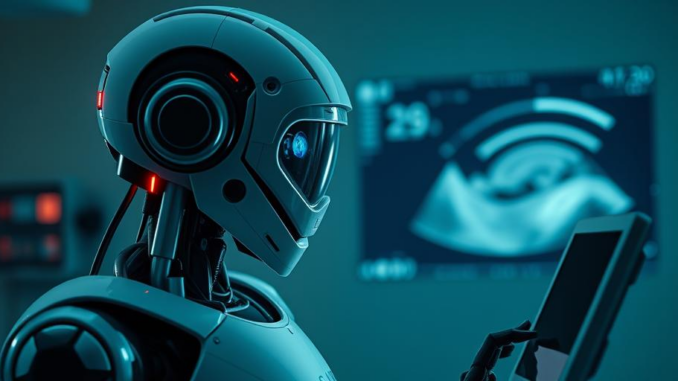
Summary
This article explores the groundbreaking development of a miniature magnetic robot designed for virtual biopsies within the body. The robot, employing a unique rolling motion, facilitates high-resolution 3D ultrasound scans, paving the way for quicker and less invasive cancer detection. This innovative technology promises to transform cancer diagnosis and treatment by providing immediate diagnostic information and potentially eliminating the need for traditional biopsies.
TrueNAS: the healthcare storage solution thats secure, scalable, and surprisingly affordable.
** Main Story**
So, there’s this mini robot, right? Developed by some clever folks at the University of Leeds, and it’s kind of a game-changer for how we detect cancer early. Imagine, instead of biopsies, we’re talking about high-res 3D scans from inside the body. It’s like a ‘virtual biopsy,’ giving doctors the info they need, without all the invasiveness. Pretty cool, eh?
The Oloid Advantage
What’s really neat is how this little guy moves. It rolls using this obscure 3D shape called an oloid. I mean, who knew geometry could be so helpful? Anyway, this shape lets the robot move around like crazy, which is crucial for getting those precise images inside the stomach and intestines. To clarify, this is the first time we’ve gotten such high-quality 3D ultrasound this deep in the body. Think about that for a second.
Cancer Detection: A Whole New Ballgame
The robot’s packing a 28 MHz micro-ultrasound array. Regular ultrasound, you know, for babies or checking organs – this is different. It’s way more detailed, allowing doctors to see tissue layers at a microscopic level. It’s almost like they’ve already done a biopsy, without actually doing one. That said; this tech opens up a new era for cancer care. Doctors can diagnose, stage, and potentially even treat lesions all in one go. No more waiting weeks for biopsy results, and fewer procedures overall. I remember my aunt had to wait three weeks for her biopsy results, and the anxiety she experienced was horrible. This robot could spare many people that experience.
Patient Comfort and Efficient Care
Honestly, I think the biggest impact of this mini rolling robot is how much better it’ll be for patients. Less invasive stuff means less discomfort. And because you get the results right away, treatment can start sooner. It’s also going to save money, since you’re combining diagnosis and treatment. Imagine the possibilities! This also helps hospitals run more efficiently; which is something they’re always looking for.
It represents a real leap forward. It’s a sign of hope for earlier detection and generally better care. Don’t you think this is a huge step towards a future where healthcare is less invasive and more effective?


The oloid shape enabling the robot’s movement is fascinating. How adaptable is this locomotion method to varying internal environments, and could it be applied to other diagnostic or therapeutic robots in the future?
Great question! The adaptability of the oloid’s locomotion is definitely a key area for future exploration. Its ability to navigate complex internal environments could potentially revolutionize various diagnostic and therapeutic applications. Imagine targeted drug delivery or precise microsurgery, all thanks to this unique rolling motion!
Editor: MedTechNews.Uk
Thank you to our Sponsor Esdebe
The use of a 28 MHz micro-ultrasound array enabling microscopic level tissue examination is impressive. Beyond cancer detection, could this technology be adapted to identify and monitor other anomalies or diseases within the body?